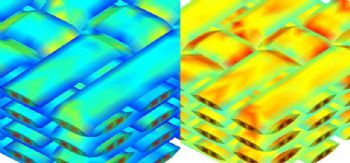
Siemens has signed an agreement to acquire MultiMechanics Inc, the developer of MultiMech finite element software that “helps companies to virtually predict failure in advanced materials at an unprecedented level of speed and accuracy”.
Siemens says it plans to integrate MultiMechanics into its Digital Industries Software, adding the ability for customers to create a ‘digital twin’ of materials by closely integrating materials engineering with part design, performance engineering, and manufacturing through MultiMechanics’ TRUE Multiscale technology for a broad range of material-driven applications.
The latter’s technology is configured to help companies efficiently predict material properties and behaviour, including failure starting at the microstructural level.
It will be incorporated into Simcenter software within Siemens’ Xcelerator portfolio, implementing materials engineering into the digital work-flow and establishing a “pervasive link between material developers, manufacturing process developers and part designers”.
Jan Leuridan, senior vice-president (simulation and test solutions) at Siemens Digital Industries Software (
www.new.siemens.com), said: “The addition of this technology enables our customers to build a digital twin of materials, which will help to shrink the innovation cycle of new products and materials, possibly saving millions of dollars and several years in development and certification in aerospace, automotive and other sectors.
"Customers will be able to fully exploit the potential of advanced materials to optimise weight and performance in an efficient way that is not possible with classical test-based approaches.”
Flavio Souza, president and CTO of MultiMechanics Inc, said: “We are excited to join Siemens and the Simcenter family.
"The combination of TRUE Multiscale technology with Simcenter 3D software will provide a strong basis for further innovation, enabling an expansion of scope of structural simulation to include multi-physics support for applications such as minimising part distortion, preventing voids during material flow, and predicting visco-elastic acoustic properties.”